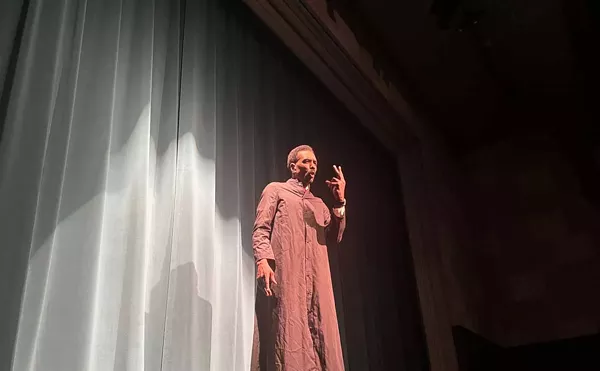
Audio By Carbonatix
[
{
"name": "GPT - Leaderboard - Inline - Content",
"component": "35519556",
"insertPoint": "5th",
"startingPoint": "3",
"requiredCountToDisplay": "3",
"maxInsertions": 100,
"adList": [
{
"adPreset": "LeaderboardInline"
}
]
}
]
In 1888 when Heinrich Hertz first detected radio waves, he could have never known what sort of an impact these electromagnetic energy streams would have on the world. And by harnessing the wireless transmission of sound, Hertz’s successor, the father of radio Guglielmo Marconi, made standard fare of what once seemed impossible.
Established as a nonprofit organization for vintage radio hobbyists, the Michigan Antique Radio Club (MARC) appreciates the history of this simple device and the story of its inventors. Which is why the club hosts several antique radio shows a year, including one this weekend in Farmington Hills.
“It started in the ’80s as an offshoot of the ham radio obsession, but has evolved into a sort of one-stop clearinghouse for vintage radios and collectors,” says MARC member Mark Oppat.
It’s easy to see the allure. Radios changed the world. For not-so-recent generations, radio became what the fireplace had been to the rural masses — the gathering spot. Its invention altered the course of world affairs, the family unit and popular culture.
Vintage radio aficionados are no less fanatical than the gear-head is for his dual cams. But MARC’s shows are not for radio wonks alone.
“This is the perfect type of show for a novice,” says Oppat. “For five bucks you can see a variety of radios ranging from the 1930s to the ’80s. Everyone has their own taste.”
Radios tell stories: They are furniture, utilities, children’s toys and status symbols. Their technology changes as quickly as the fads of the times, their evolution bookmarks the chapters of everyday living. From the 3-foot Victrolas of the 1930s to the Bakelite Admirals of the ’40s to the groovy 1970s plastic Panasonic Ball radios to the streamlined Bose systems of today, the lineage of the radio is nostalgia incarnate. And you can experience it all first-hand at MARC’s Antique Radio Swap/Sale.
Got an old radio in need of a little love? Bring it. To appeal to “green” collectors, MARC now offers Radio Rescue, a free service to anyone who needs a set evaluated, dated, repaired or sold.
“Almost everything can be restored,” assures Oppat, who has been tinkering since he was 15.
It’s comforting, really. You can almost hear a young Bing Crosby when you come across a 1930 Silvertone Cathedral radio. Every post-World War II teenybopper remembers the AM-only box that first brought them the sounds of rock ’n’ roll and Elvis. Who could have predicted that Norman Greenbaum’s “Sprit in the Sky” could offer an almost prophetic message from a lime-green faux-leather 1969 Zenith handheld transistor? And the Eames-era turquoise blue Panasonic that looks as if it came straight from the living room of Andy Warhol’s Factory? Well, it almost makes you laugh in all its “Mod-ness.”
An electronic bouquet of crystals or tubes or copper wiring, these boxes have become a part of us. Be they the source of background noise in an uncomfortable setting or the centerpiece at a dance party, their transmitted memories are as recognizable as the era from which they hail, and they have become highly collectible pieces of art.
Technology or aesthetic, a classic radio possesses the je ne sais quoi of a prized old artifact. A frozen piece of time and telecommunication that documents a world in which we all grew up.
Stroll down memory lane at the Michigan Antique Radio Club Antique Radio Swap and Sale, at Costick Activities Center (28600 Eleven Mile Road, Farmington Hills), Saturday, Feb. 1, 9 a.m.-3 p.m. Call 734-20-RADIO for more information.
Eve Doster is the Metro Times listings editor. E-mail edoster@metrotimes.com




